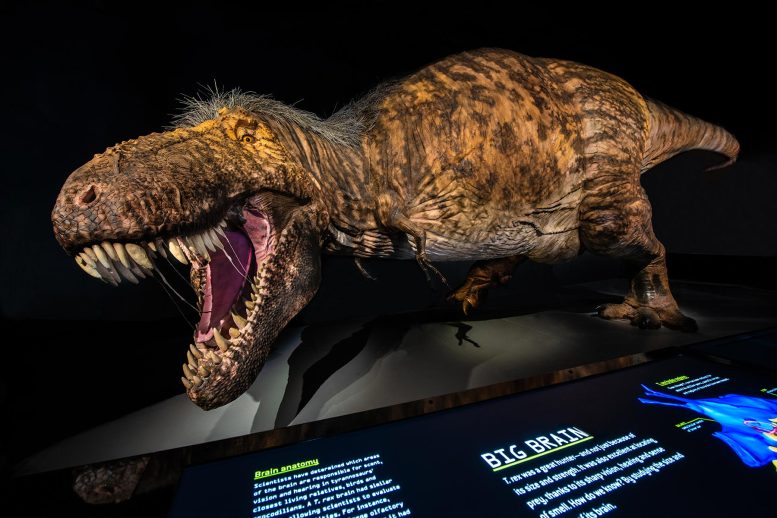
As part of the Museum’s temporary exhibition T. rex: The Ultimate Predator, which was on view from 2019-2021, visitors encountered a massive life-sized model of T. rex with patches of feathers—the most scientifically accurate representation of T. rex to date. Credit: D. Finnin/ ©AMNH
Paleontologists find insufficient evidence that the iconic Tyrannosaurus rex should be reclassified.
A bold assertion made earlier this year that fossils identified as belonging to the dinosaur Tyrannosaurus rex really represent three distinct species is debunked by new research. The rebuttal finds that the earlier proposal lacks sufficient evidence to split up the iconic species. The study is published today (July 25, 2022) in the journal Evolutionary Biology and led by paleontologists at the American Museum of Natural History (AMNH) and Carthage College.
“Tyrannosaurus rex remains the one true king of the dinosaurs,” said study co-author Steve Brusatte, a paleontologist at the University of Edinburgh who conducted his Ph.D. work at the Museum. “Recently, a bold theory was announced to much fanfare: what we call T. rex was actually multiple species. It is true that the fossils we have are somewhat variable in size and shape, but as we show in our new study, that variation is minor and cannot be used to neatly separate the fossils into easily defined clusters. Based on all the fossil evidence we currently have, T. rex stands alone as the single giant apex predator from the end of the Age of Dinosaurs in North America.”
In March 2022, authors of the controversial study made the case that T. rex should be reclassified as three species: the standard T. rex, the bulkier “T. imperator,” and the slimmer “T. regina.” The study, which was also published in the journal Evolutionary Biology, was based on an analysis of the leg bones and teeth of 38 T. rex specimens.
In the new paper, scientists revisited the data presented in the earlier study and also added data points from 112 species of living dinosaurs—birds—and from four non-avian theropod dinosaurs. According to their findings, the multiple species argument was based on a limited comparative sample, non-comparable measurements, and improper statistical techniques.
“Their study claimed that the variation in T. rex specimens was so high that they were probably from multiple closely related species of giant meat-eating dinosaur,” said James Napoli, co-lead author of the rebuttal study and a graduating doctoral student in the Museum’s Richard Gilder Graduate School. “But this claim was based on a very small comparative sample. When compared to data from hundreds of living birds, we actually found that T. rex is less variable than most living theropod dinosaurs. This line of evidence for proposed multiple species doesn’t hold up.”
“Tyrannosaurus rex remains the one true king of the dinosaurs.” — Steve Brusatte
“Pinning down variation in long-extinct animals is a major challenge for paleontologists,” said co-lead author Thomas Carr from Carthage College. “Our study shows that rigorous statistical analyses that are grounded in our knowledge of living animals is the best way to clarify the boundaries of extinct species. In practical terms, the three-species model is so poorly defined that many excellent specimens can’t be identified. That’s a clear warning sign of a hypothesis that doesn’t map onto the real world.”
Variation in the size of the second tooth in the lower jaw, in addition to robustness of the femur, indicated the presence of multiple species according to the original paper. However, the authors of the new study could not replicate the tooth findings, and they recovered different results from their own measurements of the same specimens. Additionally, the scientists on the new study took issue with how the “breakpoints” for each species using these traits were statistically determined. Because the statistical analysis in the original study defined the number of groups before the test was run, it is not useful for testing the hypothesis, according to the new study’s authors. In the latest paper, a different statistical technique was used to determine how many clusters exist within the data without any advanced assumptions, finding that they are best considered as a single group—in other words, one species—T. rex.
“The boundaries of even living species are very hard to define: for instance, zoologists disagree over the number of living species of giraffe,” said co-author Thomas Holtz, from the University of Maryland and the National Museum of Natural History. “It becomes much more difficult when the species involved are ancient and only known from a fairly small number of specimens. Other sources of variation—changes with growth, with region, with sex, and with good old-fashioned individual differences—have to be rejected before one accepts the hypothesis that two sets of specimens are in fact separate species. In our view, that hypothesis is not yet the best explanation.”
“T. rex is an iconic species and an incredibly important one for both paleontological research and communicating to the public about science, so it’s important that we get this right,” said co-author David Hone, from Queen Mary University of London. “There is still a good chance that there is more than one species of Tyrannosaurus out there, but we need strong evidence to make that kind of decision.”
Reference: ‘Insufficient Evidence for Multiple Species of Tyrannosaurus in the Latest Cretaceous of North America: A Comment on “The Tyrant Lizard King, Queen and Emperor: Multiple Lines of Morphological and Stratigraphic Evidence Support Subtle Evolution and Probable Speciation Within the North American Genus Tyrannosaurus”’ by Thomas D. Carr, James G. Napoli, Stephen L. Brusatte, Thomas R. Holtz Jr., David W. E. Hone, Thomas E. Williamson and Lindsay E. Zanno, 25 July 2022, Evolutionary Biology.
DOI: 10.1007/s11692-022-09573-1

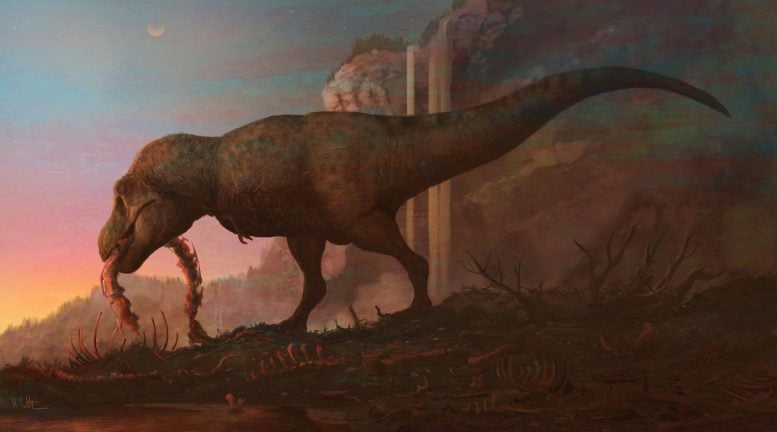
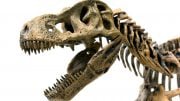
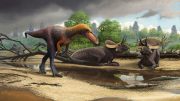
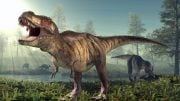
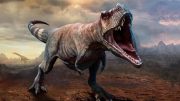

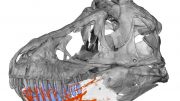
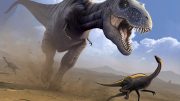
Why are this a story .oxalaia koumpiodontosuchus was name a new species long time ago with no complain so you have ph.d and claim you school is good and claim you rebuttal but you can not answer the question they are 2 species not one .one of t.rex species has 2 teeth in one socket like oxalaia a spinosauridae they said is unique in spinosauridae so it is new species of spinosauridae is design to better crush shell and bone. koumpiodontosuchus allso has these teeth.koumpiodontosuchus is gator type mesoeucrocodylia .for leg t.rex i did not learn that science .scitech daily first story i name names they are real animal google it.i did this story years ago when I saw koumpiodontosuchus on bbc Vimeo 2 part skull they found .the finding show gator is a spinosauridae because of unique teeth link .now this prove spinosauridae is a tyrannosaur were is story on this by both side this sound like badit scientist story badit means=birds are dinosaur were is bandit story bandit mean=birds are not dinosaur.but because we are dealing with corrupt media they are going to be cuts.are you telling me i am only won know of these animal ? I believe they are 3 t.rex now because I see no evidence to change it.
The reason why they know t.rex teeth was like oxalaia koumpiodontosuchus because they have living animal with teeth like that today dwarf crocodile eat a lot of shell fish so teeth are Blount a extreme heterodont teeth like what dinosaur is famous for and fossil gator type mesoeucrocodylia they know Nile crocodile has heterodont teeth easy by the picture big teeth small teeth allso have extreme heterodont teeth but it’s not Blount the Mexican crocodile allso have Blount teeth .bernissartia and koumpiodontosuchus are bernissartiidae simular lifestyle and Blount teeth the koumpiodontosuchus 2 teeth in one socket is a evolution over bernissartia in crushing shell and bones this is the model they use and why did they not use bird femur in the test because bird leg is nothing like dinosaur leg and skull and pectoral girdle .they are 2 type of dinosaur leg one is not bird like at all t.rex is in this group the won that is bird like is compsognathus the tibia is bigger than the femur this is fast animal feature or flight feature so they can jump farer and get wings the different is from compsognathus leg from archaeopteryx bird ornithomimus bird velociraptor bird they do not have giant ankle people see bird tibia think its a tibia it’s not it’s the giant ankle in bird femur is the tibia in bird femur is cover by feather and fix bird are knee runners .in tetanuran this is reason why bird are dinosaur scientist only use compsognathus as the won to turn into birds and call t.rex carnosaur like they are talking about the leg.dinosaur are femur runner birds and maniraptoran bird are tibia runner bird are knee runner.t.rex king of dinosaur .spinosaurus paper tiger how can spinosauridae lunch be king of the dinosaur Nile crocodile primitive ancestor spinosauridae was not challenge no dinosaur was advance like spinosauridae only another spinosauridae could defeat spinosauridae .spinosauridae is a true mesoeucrocodylia the death roll dinosaur motor back dinosaur the death roll is the greatest dinosaur technology spinosauridae live.Nile crocodile still causing fear in animal kingdom today.Nile crocodile is well design killer allways been probaly real king of the beast Nile crocodile is greatest tyrannosaur ever. I read 2 teeth in one socket scientest report clearly talk about crushing teeth badit scientist should talk about it too.